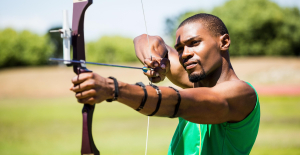The parasite Henneguya salminicola, like all the other animals, should breathe to live. And yet the parasite Henneguya salminicola does not know and lives the same. Literally: a team of scientists from the Tel Aviv University , Israel, and other institutes of research, in fact, has just found out that this bizarre and tiny parasite that survives and reproduces by infecting the muscle tissue of fish and worms underwater, does not possess a mitochondrial genome and, therefore, is not able to turn oxygen into energy. That is, basically, not breathing. It is the only animal known, at the time, equipped with the features of this type. The authors of the research give an account on the pages of the Proceedings of the National Academy of Sciences.
H. salmicola is a creature strange. It is a but see text, distantly related to corals, jellyfish and anemones, that has slowly evolved, losing the majority of the genome of the original of his cousins: “I do Not share the tissue, the nerve cells, the muscles. None of this,” explained Dorothée Huchon , a biologist and evolutionary of the university of israeli and co-author of the research. “Today we have discovered that among the traits that he has lost, there is also the ability to” breathe". It is therefore natural to ask how and why the animal has lost this trait: one hypothesis is that this “downgrade genetic”, as they called it scientists, to give the advantage to reproduce in a very short time, without “wasting time” to breathe.
The oddities do not end here. In fact, it seems that H. salminicola is evolving in a direction which is bizarre: its spores are multicellular organisms, similar to sperm cells with two tails and a pair of “eyes” ovals which are used to attach to the host animal, while the adult organism resembles much more to a being unicellular. “In general, animals are multicellular organisms with many genes that become gradually more and more complex,” explains Huchon. “In this case we are dealing with something completely different: H. salminicola is evolving to become a single-celled organism”. But if not breathing, how do you get the energy you need to survive? On this, the researchers are not yet sure of this: the hypothesis is more likely is that the animal possesses proteins capable of importing energy is already being “worked” – the so-called Atp, or adenosine triphosphate – through directly from the host organism. A parasite tout court, in other words. That do not take even the trouble of breathing.
H. salmicola is a creature strange. It is a but see text, distantly related to corals, jellyfish and anemones, that has slowly evolved, losing the majority of the genome of the original of his cousins: “I do Not share the tissue, the nerve cells, the muscles. None of this,” explained Dorothée Huchon , a biologist and evolutionary of the university of israeli and co-author of the research. “Today we have discovered that among the traits that he has lost, there is also the ability to” breathe". It is therefore natural to ask how and why the animal has lost this trait: one hypothesis is that this “downgrade genetic”, as they called it scientists, to give the advantage to reproduce in a very short time, without “wasting time” to breathe.
The oddities do not end here. In fact, it seems that H. salminicola is evolving in a direction which is bizarre: its spores are multicellular organisms, similar to sperm cells with two tails and a pair of “eyes” ovals which are used to attach to the host animal, while the adult organism resembles much more to a being unicellular. “In general, animals are multicellular organisms with many genes that become gradually more and more complex,” explains Huchon. “In this case we are dealing with something completely different: H. salminicola is evolving to become a single-celled organism”. But if not breathing, how do you get the energy you need to survive? On this, the researchers are not yet sure of this: the hypothesis is more likely is that the animal possesses proteins capable of importing energy is already being “worked” – the so-called Atp, or adenosine triphosphate – through directly from the host organism. A parasite tout court, in other words. That do not take even the trouble of breathing.
"The Republic will fight always in defense of the freedom of information, to its readers and to all those who have at heart the principles of democracy and civil coexistence"
Carlo Verdelli SUBSCRIBERS TO REPUBLIC © Reproduction reserved Today on The great frost of coronavirus on tourism. "Erased up to 40% of bookings" If the fear becomes a disease Together when it's convenient Coronavirus, the iron arm of the losers between the government and the Regions Trump inflames Indiathe Republic

 United States: divided on the question of presidential immunity, the Supreme Court offers respite to Trump
United States: divided on the question of presidential immunity, the Supreme Court offers respite to Trump Maurizio Molinari: “the Scurati affair, a European injury”
Maurizio Molinari: “the Scurati affair, a European injury” Hamas-Israel war: US begins construction of pier in Gaza
Hamas-Israel war: US begins construction of pier in Gaza Israel prepares to attack Rafah
Israel prepares to attack Rafah Spain is the country in the European Union with the most overqualified workers for their jobs
Spain is the country in the European Union with the most overqualified workers for their jobs Parvovirus alert, the “fifth disease” of children which has already caused the death of five babies in 2024
Parvovirus alert, the “fifth disease” of children which has already caused the death of five babies in 2024 Colorectal cancer: what to watch out for in those under 50
Colorectal cancer: what to watch out for in those under 50 H5N1 virus: traces detected in pasteurized milk in the United States
H5N1 virus: traces detected in pasteurized milk in the United States Private clinics announce a strike with “total suspension” of their activities, including emergencies, from June 3 to 5
Private clinics announce a strike with “total suspension” of their activities, including emergencies, from June 3 to 5 The Lagardère group wants to accentuate “synergies” with Vivendi, its new owner
The Lagardère group wants to accentuate “synergies” with Vivendi, its new owner The iconic tennis video game “Top Spin” returns after 13 years of absence
The iconic tennis video game “Top Spin” returns after 13 years of absence Three Stellantis automobile factories shut down due to supplier strike
Three Stellantis automobile factories shut down due to supplier strike A pre-Roman necropolis discovered in Italy during archaeological excavations
A pre-Roman necropolis discovered in Italy during archaeological excavations Searches in Guadeloupe for an investigation into the memorial dedicated to the history of slavery
Searches in Guadeloupe for an investigation into the memorial dedicated to the history of slavery Aya Nakamura in Olympic form a few hours before the Flames ceremony
Aya Nakamura in Olympic form a few hours before the Flames ceremony Psychiatrist Raphaël Gaillard elected to the French Academy
Psychiatrist Raphaël Gaillard elected to the French Academy Skoda Kodiaq 2024: a 'beast' plug-in hybrid SUV
Skoda Kodiaq 2024: a 'beast' plug-in hybrid SUV Tesla launches a new Model Y with 600 km of autonomy at a "more accessible price"
Tesla launches a new Model Y with 600 km of autonomy at a "more accessible price" The 10 best-selling cars in March 2024 in Spain: sales fall due to Easter
The 10 best-selling cars in March 2024 in Spain: sales fall due to Easter A private jet company buys more than 100 flying cars
A private jet company buys more than 100 flying cars This is how housing prices have changed in Spain in the last decade
This is how housing prices have changed in Spain in the last decade The home mortgage firm drops 10% in January and interest soars to 3.46%
The home mortgage firm drops 10% in January and interest soars to 3.46% The jewel of the Rocío de Nagüeles urbanization: a dream villa in Marbella
The jewel of the Rocío de Nagüeles urbanization: a dream villa in Marbella Rental prices grow by 7.3% in February: where does it go up and where does it go down?
Rental prices grow by 7.3% in February: where does it go up and where does it go down? Even on a mission for NATO, the Charles-de-Gaulle remains under French control, Lecornu responds to Mélenchon
Even on a mission for NATO, the Charles-de-Gaulle remains under French control, Lecornu responds to Mélenchon “Deadly Europe”, “economic decline”, immigration… What to remember from Emmanuel Macron’s speech at the Sorbonne
“Deadly Europe”, “economic decline”, immigration… What to remember from Emmanuel Macron’s speech at the Sorbonne Sale of Biogaran: The Republicans write to Emmanuel Macron
Sale of Biogaran: The Republicans write to Emmanuel Macron Europeans: “All those who claim that we don’t need Europe are liars”, criticizes Bayrou
Europeans: “All those who claim that we don’t need Europe are liars”, criticizes Bayrou These French cities that will boycott the World Cup in Qatar
These French cities that will boycott the World Cup in Qatar Archery: everything you need to know about the sport
Archery: everything you need to know about the sport Handball: “We collapsed”, regrets Nikola Karabatic after PSG-Barcelona
Handball: “We collapsed”, regrets Nikola Karabatic after PSG-Barcelona Tennis: smash, drop shot, slide... Nadal's best points for his return to Madrid (video)
Tennis: smash, drop shot, slide... Nadal's best points for his return to Madrid (video) Pro D2: Biarritz wins a significant success in Agen and takes another step towards maintaining
Pro D2: Biarritz wins a significant success in Agen and takes another step towards maintaining


















